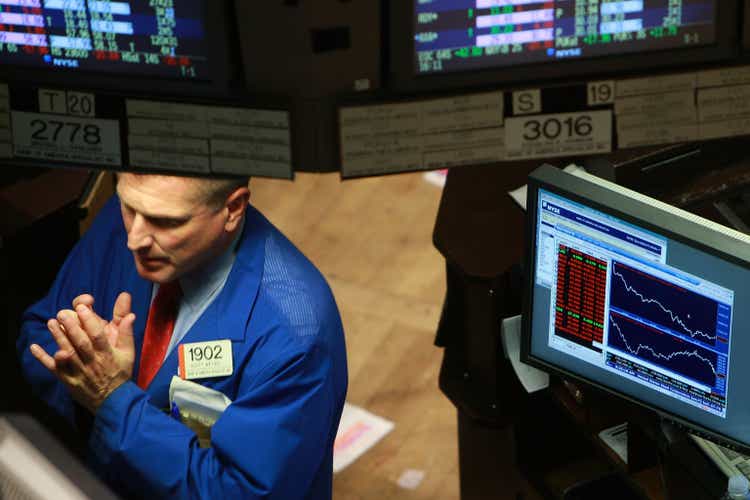[ad_1]
Spencer Platt/Getty Images News
Negative Headlines without perspective
Here is the headline that crushed the market Tuesday August 13 (and continues to crush it): “Inflation rose 0.1% in August even with a sharp drop in gas prices.” Why don’t we accentuate the negative (kind of a media thing). I will add that economists who estimate these things had a consensus estimated that the CPI would drop 0.1%. This represented a worse performance by 2/10% (a minuscule amount) than economist’s estimates. Since economists are always correct in their estimates, this number was a big disappointment (NOT). Think about it. A plus 0.1% annualized would put our 12-month forward CPI increase at 1.2%. Of course this number is ‘pie in the sky,’ but directionally, it is a good number after what we have experienced in the past 18 months. This positive, however, was not part of the discussion. Thus ensued a wave of speculation about how aggressive the Fed might be in raising rates at their next meeting. The markets crashed with tech-heavy, valuation-bloated innovation names (most interest rate sensitive names) taking on the chin (NASDAQ down 5% with the S&P not far behind, down 4.3%).
One of my favorite sources is a true value-added economist blogging under the name “Calafia Beach Pundit”, A.K.A Scott Grannis. Scott Grannis was Chief Economist from 1989 to 2007 at Western Asset Management Company, a Pasadena-based manager of fixed-income funds for institutional investors. He does good and thoughtful work … his take:
“Inflation Pressures Are In Fact Cooling…”
He contends:
“There is abundant evidence that inflation pressures are cooling: Non-energy commodity prices are soft (see my last post for lots of charts). Oil is down over 25% in the past four months. The dollar is very strong.”
“Inflation expectations are relatively low and stable (averaging about 2.6% for the past 2 ½ months). Housing prices and new mortgage applications are falling because mortgage rates have doubled so far this year (this means Fed rate hikes are getting lots of traction). Rents are still on the rise, but they are a lagging indicator (rents rise about a year after prices rise, so they will likely begin to stabilize about 6-9 months from now because prices started falling a few months ago).”
Another point he makes is that it was not the Fed’s QE policies that bred the current surge in prices but government policies taken on during the pandemic (helicopter money) that are responsible.
Importantly, if Grannis is correct and as the market is forward-looking, we should be buying stocks, not selling them.
The naysayers would counter we are still going to see higher interest rates as inflation abates and that will spell bad times for the market. I would say market history would argue against a bad market outcome from here.
What is the history you don’t know?
President Harry Truman said, “The only thing that’s new is the history you don’t know.” This is especially true in the stock market and economy because most people are occupied elsewhere earning a living, raising families and navigating the twists and turns of day-to-day life. When the world of finance intrudes they unfortunately have only the media to rely on. This is sad because the media’s motivation is not necessarily to inform and educate but to make money. Some of their most successful tools are fear and sensationalism.
Here is some history that may help you sleep better and be a better investor
– Between January 1, 1975, and November 1980 the S&P 500 rose from 68 to 140.
– CPI inflation in 1975 was 9.1%. It peaked in 1980 at 13.5%.
– The yield on the 10-year Treasury was 7.5% at the beginning of 1975. It peaked at 15% in 1982 (Fed funds peaked in 1981 at 20%).
– The biggest drawdown from 140 on the S&P as interest rates and inflation peaked was about 28% (roughly back to 100) before it began its move to 1550 in March of 2000.
– Again consider fun-fact number one as it relates to bullets 2, 3 and 4. it flies in the face of today’s conventional wisdom.
This whole narrative about the negative impact on the market of higher inflation and interest rates simply does not hold water vs. this factual data from the 1970s and 80s.
Why? My best guess is that the price inflation showed up in increasing corporate earnings-The companies had pricing power. They were able to charge more than their costs were rising. Earnings grew!
What’s your take?
[ad_2]
Image and article originally from seekingalpha.com. Read the original article here.

